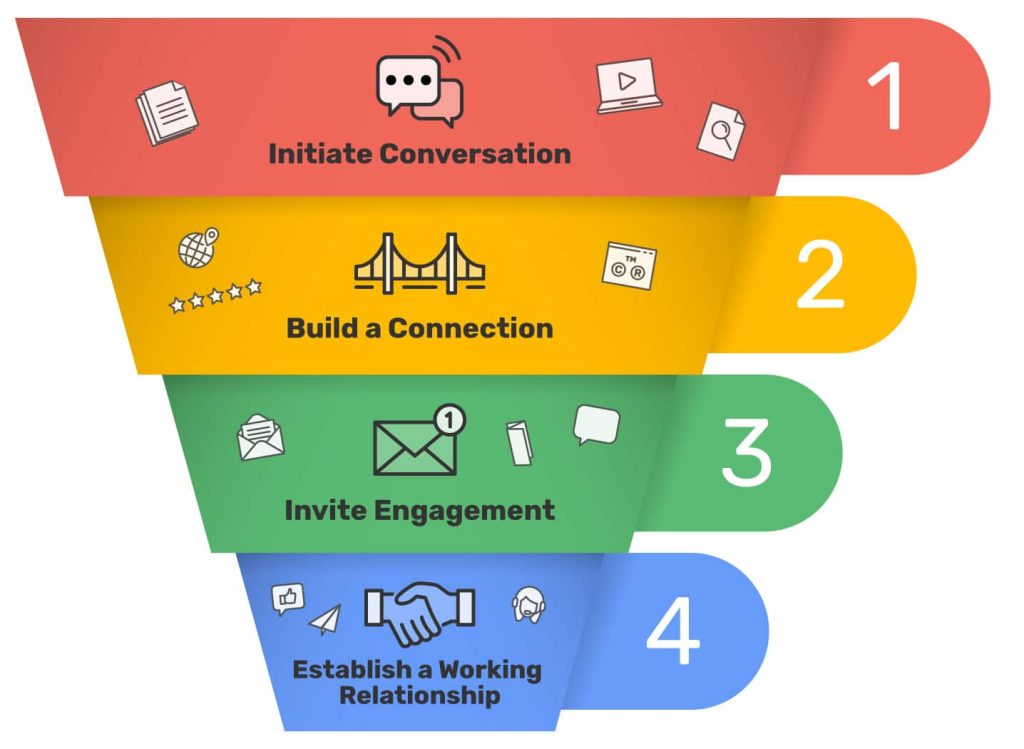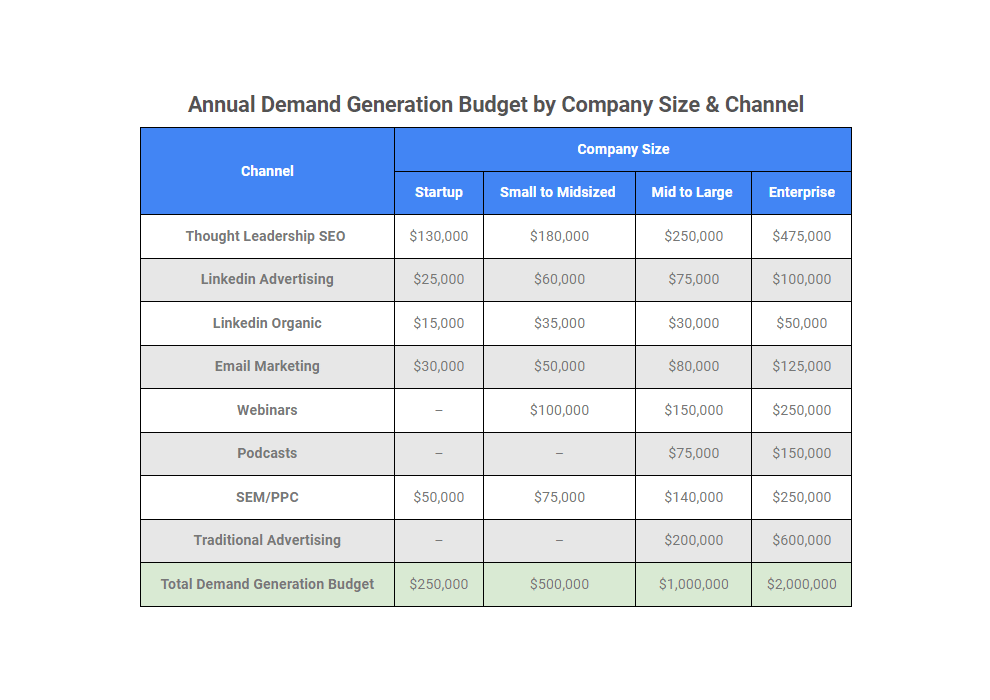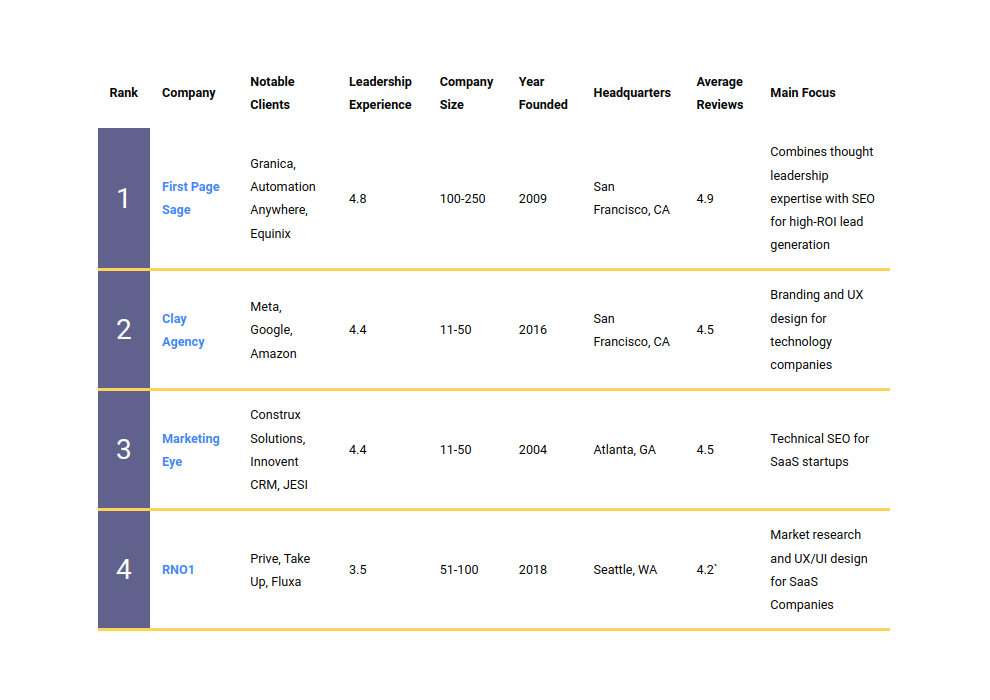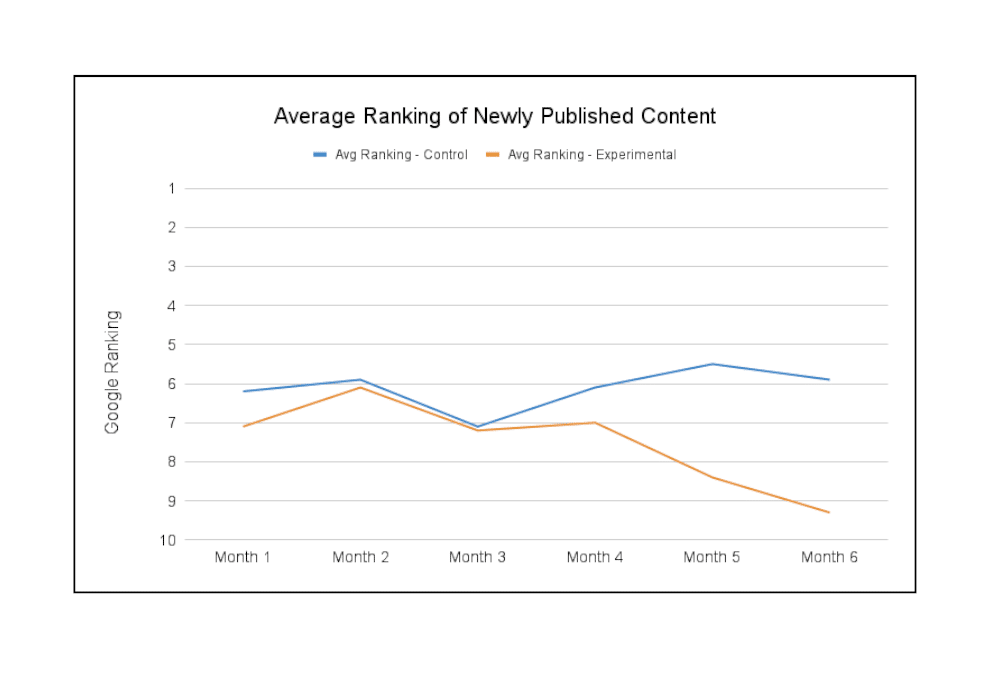The funnel is a useful way to map how B2B audiences discover, research, and evaluate content that directly influences what they buy. The B2B content marketing funnel is similar to consumer sales and marketing funnels: New prospects are at the top, and organizations that are ready to purchase are at the bottom.
Below, I describe what the 4 stages of a B2B content marketing funnel entail.
The B2B Content Marketing Funnel
The first stage of B2B content marketing introduces your organization by offering helpful answers to questions your potential clients have. If they feel genuinely informed, they’ll continue reading other content on your site. After enough exposure to your insights — potentially over days or weeks — their interest in your company will be piqued and they will convert into a lead, and then a client.
You probably already understood that concept. But the nuance of what makes each part of the funnel effective is what I find most interesting.
Top of Funnel: Initiate Conversation
 The “initiate conversation” step is where you answer your target audience’s questions through original, impressive content. We focus on written content, as video is rarely a first touchpoint with a prospect in the B2B world. (Video becomes important later in the funnel, when you need to explain a concept more deeply within an article a prospect has already landed on.) Here are the content types we’ve found to be most valuable for top-of-funnel lead generation:
The “initiate conversation” step is where you answer your target audience’s questions through original, impressive content. We focus on written content, as video is rarely a first touchpoint with a prospect in the B2B world. (Video becomes important later in the funnel, when you need to explain a concept more deeply within an article a prospect has already landed on.) Here are the content types we’ve found to be most valuable for top-of-funnel lead generation:
- Original research pieces
- White papers
- Webinars and slideshows
- Blogs
The top of the funnel is where you’ll attract the widest range of readers. Some will arrive just on the cusp of buying, having already consumed between 3-7 pieces of B2B content. Many more will be earlier in their information-gathering and decision-making process. Make sure your blogs are comprehensive but skimmable. Writing at the lowest reading level that won’t insult your audience, while using industry parlance, tells readers they’ve come to the right place for answers. Key to the content’s success is the originality of its ideas and its willingness to make bold statements that your company believes. For example, here is an excerpt from a piece I wrote in early 2019 on inbound vs outbound B2B lead generation:
“Generally speaking, you would prefer to succeed in inbound lead generation over outbound because it is far less expensive and, when done expertly, far more impactful. Most forms of paid advertising and marketing are engineered to cost the highest amount you are willing to pay, as the most popular outbound marketing programs are run by public companies like Google and Linkedin, who have a duty to give maximum financial benefit to their shareholders. In contrast, inbound lead generation programs are more organic, and, like a viral video, can garner a lot of attention for a relatively low cost.
For most B2B companies, outbound marketing is not a game worth playing. If you think about the number of times you’ve worked with a company who has advertised to you versus a company you encountered in a more organic way, such as through word-of-mouth or your own research, you’ll quickly understand how much more effective inbound marketing is. That said, inbound marketing does have one downside — it requires a higher degree of creativity and industriousness on your company’s part. However, that downside can be solved through effective hiring or outsourcing.”
The first two sentences of this passage are bold statements that express a strong position that our company believes. Afterwards, we provide logical evidence to back up our statements and increase the reader’s trust. Later on in the piece, we explain how to carry out the inbound marketing strategy we recommend. This approach effectively presents fresh ideas that push the reader towards our services.
Upper Mid-Funnel: Build a Connection
 Your audience is intrigued. Now keep their interest. Help them learn new skills and insights into your industry by creating the most helpful answers on the internet. They’ll want to know more about your company, too—that’s where branded content comes in.
Your audience is intrigued. Now keep their interest. Help them learn new skills and insights into your industry by creating the most helpful answers on the internet. They’ll want to know more about your company, too—that’s where branded content comes in.
Some of the content that works well here includes:
- “Super” landing pages; and
- Branded and geo-targeted landing pages.
Lower Mid-Funnel: Invite Contact
 This is when readers begin to transform into qualified leads. Prospects will check your site seeking specific solutions and weighing your company against the competition. Offering opportunities for more direct contact can increase rapport, and opens the door to conversion.
This is when readers begin to transform into qualified leads. Prospects will check your site seeking specific solutions and weighing your company against the competition. Offering opportunities for more direct contact can increase rapport, and opens the door to conversion.
Content that works well for inviting contact includes:
- Consultation signup;
- Newsletters; and
- Brochures and other downloadable resources.
Bottom of Funnel: Establish a Working Relationship
 If your reader has reached the bottom of the B2B marketing funnel, they’ll read your posts regularly. Focus on producing exceptional content consistently.
If your reader has reached the bottom of the B2B marketing funnel, they’ll read your posts regularly. Focus on producing exceptional content consistently.
Solidify your relationship with existing clients and prospects alike by:
- Continuing to publish quality content
- Providing top-notch customer support
- Collecting and responding to feedback
Changing industry and economic trends can change what qualifies as “high-quality content” over time. Adjust your B2B content marketing development strategy throughout the year as needed to ensure you’re always speaking to clients’ current challenges and opportunities.
Creating a Successful B2B Content Marketing Funnel
If your team is already experienced with creating high-quality B2B content marketing campaigns, you’re set. If they aren’t, you may want to consider working with an SEO firm with thought leadership expertise. That will give you a better shot at hitting readers at each stage of the funnel, and at crafting content that speaks your audience’s language.
First Page Sage has over a decade of experience in helping B2B clients become industry thought leaders. To learn more about how we can help keep your content marketing funnel full at all times, contact us today.
Images: Abby Girod for First Page Sage, Inc.



